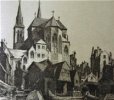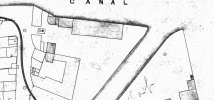Heartland
master brummie
Whilst there has been much interest in waterways certain waterways have been lost through a variety of reason. In Birmingham these former waterways were essentially basins or short branches. Examples include :
(1) The long basins that passed under Gas Street & Berkeley Street
(2) The basin at Worcester Wharf, now covered by the Mailbox
(3) The Old Wharf, Paradise, now totally lost to the new development there
(4) Gibsons Arm and Baskerville Basin, lost to the new Library Complex and Baskerville House
(5) Whitmore's Arm
(6) Brewery Basin
(7) Dowlers Arm
(8) Arm to Heneage Street
(9) Warwick Wharf Basins
No doubt members might suggest more?
(1) The long basins that passed under Gas Street & Berkeley Street
(2) The basin at Worcester Wharf, now covered by the Mailbox
(3) The Old Wharf, Paradise, now totally lost to the new development there
(4) Gibsons Arm and Baskerville Basin, lost to the new Library Complex and Baskerville House
(5) Whitmore's Arm
(6) Brewery Basin
(7) Dowlers Arm
(8) Arm to Heneage Street
(9) Warwick Wharf Basins
No doubt members might suggest more?























